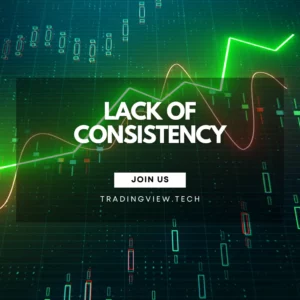In the fast-paced and high-stakes world of trading, emotional discipline often proves to be just as critical as technical analysis or market knowledge. While every trader, from novice to veteran, experiences losses, the way one responds to those losses can define their long-term success or failure. One of the most damaging yet common reactions to a losing trade is what’s known as chasing losses—a phenomenon where traders, driven by emotion rather than logic, attempt to immediately recover their losses by taking on greater risks. This behavior, often referred to as revenge trading, rarely ends well.
Chasing losses can transform a minor setback into a major blow to both a trader’s financial capital and psychological resilience. What begins as an attempt to “get even” with the market can spiral into a cycle of impulsive decisions, excessive risk-taking, and mounting losses. Understanding why this happens, and how to guard against it, is essential for anyone serious about trading as a sustainable endeavor.
1. Understanding Chasing Losses
At its core, chasing losses refers to the compulsion to recover a financial setback by making increasingly risky trades in an attempt to “win back” what was lost. Rather than taking time to assess the situation rationally, the trader feels an overwhelming urge to get back into the market—often immediately—with the hope that a quick victory will erase the pain of the loss. Unfortunately, this reactive approach usually results in a deepening of the original problem.
This behavior is not a rational strategy; it’s an emotional reflex. When a trade goes south, it triggers a complex mix of negative emotions—frustration, anger, embarrassment, and fear of failure. The trader’s ego takes a hit, and rather than accepting the loss as a normal part of the game, they may feel compelled to “prove” themselves—either to the market, to others, or even to their own sense of self-worth.
The manifestation of chasing losses can be subtle at first. A trader might slightly increase their position size or bend a rule from their trading plan. But soon, these small deviations can escalate: abandoning strategies entirely, ignoring risk management protocols, and placing large, impulsive bets fueled by desperation rather than analysis. What makes this behavior so dangerous is that it’s often self-reinforcing—the more one loses while chasing, the stronger the urge becomes to recover those losses, leading to a vicious cycle.
2. The Psychology Behind Revenge Trading
To truly understand why chasing losses is so common—and so dangerous—we need to look at the psychological forces at play. At the heart of this behavior is loss aversion, a well-documented concept in behavioral finance which suggests that the pain of losing is psychologically twice as powerful as the pleasure of gaining. In other words, a $100 loss feels much worse than the joy of a $100 gain. This imbalance can cause traders to behave irrationally when faced with losses, seeking to avoid the emotional discomfort at any cost.
Closely related is the sunk cost fallacy—the idea that we must continue investing in something simply because we’ve already committed resources to it, even if continuing to do so leads to further losses. Traders caught in this trap believe that they can’t “let the market win,” and instead double down on risky trades in an effort to justify their earlier decisions. But markets are indifferent to personal pride or past actions. Reacting emotionally only clouds judgment and increases vulnerability to further mistakes.
Additionally, ego involvement plays a major role. Many traders conflate their self-worth with their success in the market. A losing trade isn’t just a financial event—it becomes a personal failure. This inflated sense of identity tied to performance can drive traders to irrational extremes, trying to protect their ego at the expense of proper decision-making.
Revenge trading is ultimately a manifestation of emotional dysregulation—when one’s feelings override their ability to make calm, rational choices. It’s fueled by an internal narrative that says, “I can’t end the day in the red,” or “I have to get back what I lost.” These thoughts might feel justified in the moment, but they lead to reckless actions that often cause more harm than the original loss ever could.
3. Consequences of Chasing Losses
The consequences of chasing losses extend far beyond a few bad trades. At its most immediate level, this behavior often leads to compounding financial losses. A trader who doubles or triples their position size in hopes of a quick comeback is also doubling or tripling their exposure to risk. When these trades fail—as they often do due to a lack of planning and emotional decision-making—the financial impact can be devastating. What might have been a manageable single loss snowballs into a significant drawdown, potentially wiping out months or even years of steady gains.
But the toll is not only financial. The psychological cost of chasing losses can be even more damaging. Emotional trading places immense mental strain on a person. The constant stress of trying to recoup losses, coupled with the fear of failure and the guilt of poor decisions, can quickly lead to emotional exhaustion. Traders may find themselves obsessing over the market, unable to sleep, and losing the clarity required to function effectively. Over time, this can spiral into burnout, a state of emotional, physical, and mental fatigue that undermines both personal well-being and trading performance.
Furthermore, repeated experiences of failure while chasing losses can deeply erode self-confidence. Traders begin to doubt their skills, their strategies, and their ability to succeed. This loss of trust in oneself can be paralyzing, leading to hesitation in future trades, abandonment of proven systems, or quitting the market altogether.
In the long run, a trader who does not learn to manage the urge to chase losses risks more than just capital—they risk their long-term viability in the market. Successful trading requires a calm, disciplined mindset. When emotion takes the wheel, even the most skilled traders can lose their edge. It’s not just about the trades you make—it’s about the mindset you maintain.
4. Recognizing the Warning Signs
The first step in overcoming the habit of chasing losses is being able to recognize when it’s happening. Like many harmful behaviors, revenge trading often begins subtly and grows more dangerous the longer it goes unchecked. The earlier a trader can identify the warning signs, the easier it is to stop the downward spiral before it does real damage.
One of the most common signs is irrationally increasing position sizes after a loss. Rather than sticking to their usual risk parameters, a trader might suddenly bet more than they normally would in an attempt to recover quickly. This behavior often masquerades as confidence or aggression, but it is usually rooted in fear and desperation.
Another red flag is deviation from the trading plan. This might include taking trades that don’t meet your setup criteria, skipping over due diligence, or abandoning stop-losses. When discipline starts to erode, it’s a strong indicator that emotions are starting to take control.
Impulsive trading decisions are another hallmark of chasing losses. This can look like jumping into the market without a clear signal, reacting to small market movements with big trades, or entering positions immediately after a loss without taking time to reflect. The common thread is a lack of patience and a desire to “fix” the situation right away.
Other signs may include checking charts obsessively, overtrading, or feeling an overwhelming need to “win back” what was lost. Traders may even experience physical symptoms of stress—racing heart, tense muscles, or trouble sleeping—all of which indicate that emotional regulation is slipping.
Recognizing these behaviors as early as possible is critical. By becoming aware of the internal cues and external actions that signal emotional trading, traders can intervene before small missteps turn into major losses. Awareness creates space for choice—and with choice comes the opportunity to return to discipline, logic, and long-term thinking.
5. Effective Strategies to Prevent Revenge Trading
Preventing revenge trading requires a combination of practical tools and psychological awareness. While emotions can never be entirely removed from trading, they can be managed and mitigated through consistent habits and disciplined processes. Below are some effective, actionable strategies traders can implement to protect themselves from the destructive cycle of chasing losses.
1. Set and respect stop-losses
Stop-losses are not just technical tools—they are psychological safeguards. By defining the maximum acceptable loss on a trade before entering it, traders create a protective boundary that helps prevent emotional decision-making. More importantly, the key is to respect that boundary. Ignoring or moving stop-losses in the heat of the moment is one of the fastest routes to uncontrolled losses.
2. Maintain a detailed trading journal
Keeping a trading journal can be one of the most powerful habits a trader develops. Logging each trade, including the reasoning behind it, the emotions felt during execution, and the outcome, offers valuable insights into patterns of behavior. Over time, the journal becomes a mirror that reveals tendencies toward emotional trading and helps reinforce discipline and self-awareness.
3. Use a clear risk-reward ratio
Every trade should have a pre-defined risk-reward ratio—ideally something like 1:2 or better. This ensures that even if a trader loses a few trades in a row, a single winning trade can make up for multiple small losses. Sticking to this principle limits the temptation to “go all in” after a loss and keeps the focus on long-term consistency rather than short-term recovery.
4. Leverage automation and trading tools
Emotion is the enemy of consistency. One way to remove emotional decision-making from the process is to use automated tools, such as algorithmic strategies or pre-programmed entry and exit rules. These tools execute based on logic, not feelings, and can serve as a buffer between a trader and their impulses.
5. Follow a written trading plan
Having a written plan that outlines your strategy, risk limits, preferred setups, and emotional check-ins can act as a powerful anchor. When emotions rise, traders can refer back to their plan to remind themselves of their framework and keep decisions grounded in logic.
Implementing these strategies won’t guarantee profits, but they will build resilience, consistency, and control—three of the most essential ingredients for long-term trading success.
6. The Importance of Emotional Discipline and Taking Breaks
Emotional discipline is the cornerstone of successful trading. Even the best strategies and technical systems will fail if they are constantly undermined by reactive, emotion-driven decisions. Learning to step back, reset, and regain emotional clarity after a loss is not just helpful—it is essential.
After a losing trade, the instinct may be to jump back in, eager to reverse the mistake. But this is when the mind is most vulnerable. Taking a break, whether for a few hours, a day, or even longer, can dramatically reduce the urge to revenge trade. It allows the nervous system to calm down and gives space to reflect on the situation with a clearer, more objective mindset.
Mindfulness practices—such as meditation, deep breathing, or simply spending time in silence—can be particularly effective for regaining balance. These techniques enhance self-awareness and help traders become more attuned to their emotional states before they influence decisions.
Physical activity is another powerful antidote to emotional turbulence. A walk, workout, or even a few minutes of stretching can reset the body’s stress response, improve mood, and create a shift in focus. Getting away from the screen and into the body grounds the mind, making it easier to return with a fresh perspective.
Equally important is cultivating a healthy trading routine. This means having regular review periods, designated screen time, and personal boundaries that prevent trading from becoming an all-consuming obsession. Emotional discipline is not built in moments of pressure alone—it’s maintained through consistent habits that support long-term mental well-being.
Ultimately, trading is a performance activity. And just like athletes, traders perform best when they are calm, focused, and in control. By respecting the emotional toll that losses can take and prioritizing mental clarity, traders place themselves in a much stronger position to navigate the markets with skill and sustainability.



